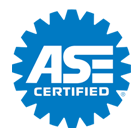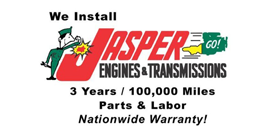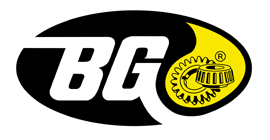Serpentine Belt Service at Westside Automotive
Posted March 27, 2022 9:31 AM
Most Houston folks occasionally have days when they've got a bunch of errands to run. Yesterday was my day off and I needed to fill the gas tank, pick up some groceries at my Houston market, swing by the ATM and get the kids from school. I could have made four trips . . . but that would have been totally inefficient. Instead I got unusually organized and planned my stops. I hit the ATM first and got gas next. Then I went to the supermarket and picked up the kids on the way home. I was proud of my wise use of time and money.
What does this have to do with your car? Well, back in the day, each of your engine's accessories, like the alternator and air conditioner, were powered by separate belts. A vehicle might have five or six belts. These days, vehicles have a single belt to run all the accessories. It's called the serpentine belt. A pulley attached to the vehicle engine's crank provides the power to turn the serpentine belt. On the engine in the video, the first accessory in line is the power steering pump, which makes it easier to steer your vehicle.
Next comes the alternator which powers the vehicle's electrical system and charges the battery. Then the air conditioning compressor. This helps make cold air to keep you comfortable all summer long in Houston. Finally, we come to the belt tensioner. Its job is to apply pressure on the belt to keep it tight. Then, back home to the crank.
This is a pretty typical setup, but it can vary somewhat. In some vehicles the water pump or radiator fan or the power brakes are also run by the serpentine belt. Some even have two serpentine belts. No matter how your engine is laid out, you're not going far without a serpentine belt. Your vehicle manufacturer has a recommended interval for replacing your belt and your Westside Automotive service technician can inspect it for damage or wear.
Several years ago, manufacturers started making serpentine belts out of a new material. It's much more durable, but it's harder to tell when the belt needs to be replaced. The old style belts would crack and chunks would fall off so you could easily see when you needed a new one.
On the new style belts, if the ribs wear too deep, it's time to replace. Your Westside Automotive technician uses a simple gauge to tell when the belt is worn.
A worn belt stresses your vehicle engine's expensive accessories and causes them to wear prematurely. So, change your serpentine belt and belt tensioner according to your manufacturer's recommendations to extend the life of your accessories and to prevent future breakdowns.
Give us a call.
Westside Automotive
12510 Oxford Park Dr.
Houston, TX 77082
281-589-8984
http://www.houstonwestsideautomotive.com
Getting the Right Tires and Wheels in Houston
Posted March 20, 2022 11:51 AM
A lot of people get custom wheels in Houston. When you do this yourself (over the internet . . .) you could run into trouble if you're not careful. Sometimes, once they're mounted, they just don't fit right. The tires rub in turns or on bumps. You don't want that.
Consulting your Westside Automotive tire professional can ensure you get the right fit. First he'll ask you a series of questions about your Houston driving needs and what you want in your new wheels. Now, not every wheel can go on every car. Care must be taken so that tires and wheels are not too large or that the wheel is centered too far towards the outside or the inside so the tires rub.
If you don't want to make any modifications to your vehicle, you would need to focus on the wheels that would fit. With trucks, some people in Houston like much bigger tires so they need a suspension lift.
Also, most Houston drivers don't realize that you need to keep the rolling diameter of your new tires – the overall height of the tire – very close to what came from the factory in order for your vehicle's anti-lock brakes and stability control systems to work properly.
The computers that control these systems are calibrated to a certain size tire. When you go bigger or smaller, the computer doesn't know what changes you made so it can't tell how fast you're going. This, of course, means it sends commands to the brakes and traction control that are based on the wrong speed. If you go with a different rolling diameter, your vehicle engine control computer can be reprogrammed for the new tire size.
Either way, there are hundreds of wheel and tire choices to choose from in TX. You can pick the style of wheel you want and then talk with your friendly and knowledgeable Westside Automotive tire professional about how big the wheel should be – and how to select the right tire for your vehicle. Your Westside Automotive service advisor will help you find the best tire to meet your style, performance, ride and handling needs in Houston.
Westside Automotive
12510 Oxford Park Dr.
Houston, TX 77082
281-589-8984
http://www.houstonwestsideautomotive.com
Automotive Tips from Westside Automotive: Causes of Wheel Misalignment
Posted March 13, 2022 9:20 AMWhen properly aligned, all of your wheels are pointed in the same direction. Your vehicle will track true and handle the way it is designed. Houston drivers often associate our wheels being “knocked” out of alignment with an event like a major crash, hitting a pothole, curb or some other object. While these can certainly take your wheels out of alignment, the bumps and bounces of everyday Houston driving take their toll on wheel alignment as well. Your car can lose alignment over time with just normal driving.
When your wheels are out of alignment, the team of automotive professionals at Westside Automotive in Houston can return your wheels to the factory settings. Most owners’ manuals suggest an inspection every year or two.
Give us a call.
Westside Automotive
12510 Oxford Park Dr.
Houston, TX 77082
281-589-8984
http://www.houstonwestsideautomotive.com
How Much is Enough for Houston Auto Owners? Tire Tread Depth
Posted March 6, 2022 10:21 AM
Most Houston drivers know that tires wear out and that the wear has to do with tread depth. Most of us have heard that “bald” tires are dangerous, but most of us picture a tire with no tread at all when we think of a bald tire. And when we take our vehicles in for preventive maintenance, the technician tells us they're need to be replaced long before all the tread is worn off. Just how much tire tread wear is too much? And how can you tell? Tires are and their condition is important to the safe handling of a vehicle, so it's for Houston vehicle owners to know the answers to these questions.
First of all, it's important to understand that there may be a legal limit to tread wear. If your tires are worn past this limit, you have to replace them to be in compliance with TX auto safety laws. That's why measuring your tread wear is part of a vehicle safety inspection.
In some jurisdictions, tread must be at least 1.6 millimeters or 2/32 of an inch thick. This standard has been in effect since 1968. But this standard has recently been called into question, and some TX professionals are arguing that it be changed.
The safety issue that has brought this standard under scrutiny is the ability of a vehicle to stop on a wet surface. When a vehicle has trouble stopping, most Houston drivers immediately look at the brakes as the source of the problem. But tires are crucial to safe stopping distances because they provide the traction required in a stop.
A tire's contact with the road surface creates traction, which allows for effective braking. On a wet surface, a tire only has traction if it can get to the road's surface. So tire tread is designed to channel water out from under the tire to allow it to stay in contact with the road. If the tire can't shift the water, then it starts to “float.” This condition is called hydroplaning. It is very dangerous for Houston drivers since the vehicle won't stop no matter how hard the driver presses the brakes. Steering control is also lost.
A recent study tested the stopping ability of a passenger car and a full-sized pick-up on a road surface covered with only a dime's depth of water (less than a millimeter). The vehicles were traveling at 70 mph (112 kph) when they stopped on the wet surface. At 2/32 (1.6 mm) tread depth, the stopping distance was double that of a new tire. The passenger car was still traveling at 55 mph (89 kph) when it reached the stopping distance it experienced with new tires.
Let's suppose that you're on a busy Houston road in a light drizzle and a vehicle stops suddenly in front of you. You just bought new tires and you brake hard, missing the vehicle with only inches to spare. If you hadn't bought those new tires, you would have crashed into that vehicle at 55 mph (89 kph). That is a major difference.
What if your tires had a tread depth of 4/32 (3.2 mm)? You would have crashed into that vehicle at 45 mph (72 kph). Still not a good situation. But it's better.
Now what if you were driving that pick-up truck? You wouldn't have missed that vehicle in the first place, and you would have crashed at higher rates of speed in both of the other scenarios. The heavier your vehicle, the longer its stopping distance. It's a matter of physics.
The results of this test has led Consumer Reports and others to ask that the standard for tread wear be changed from 2/32 (1.6 mm) to 4/32 (3.2 mm). The increased standard will improve safety on the road and save lives here in TX and nationally.
Of course, until the standard changes, you'll have to decide whether you'll be willing to replace your tires a little sooner.
You can use an American quarter to tell if your tread wear is down to 4/32 (3.2 mm). Place the quarter into the tread with George's head toward the tire and his neck toward you. If the tread doesn't cover George's hairline, you're under 4/32 (3.2 mm). With a Canadian quarter, the tread should cover the digits of the year.
You can measure the 2/32 inch (1.6 mm) tread wear with a penny. If the tread touches the top of Abe's head, it's at 2/32 (1.6 mm). Tires are super important when it comes to vehicle care. But their condition has a major impact on safety. We need to decide whether to sacrifice safety for economy. Keeping our tread wear above 4/32 in (3.2 mm) is good auto advice.
Westside Automotive
12510 Oxford Park Dr.
Houston, TX 77082
281-589-8984
westsideautomotive.autotipsblog.com












